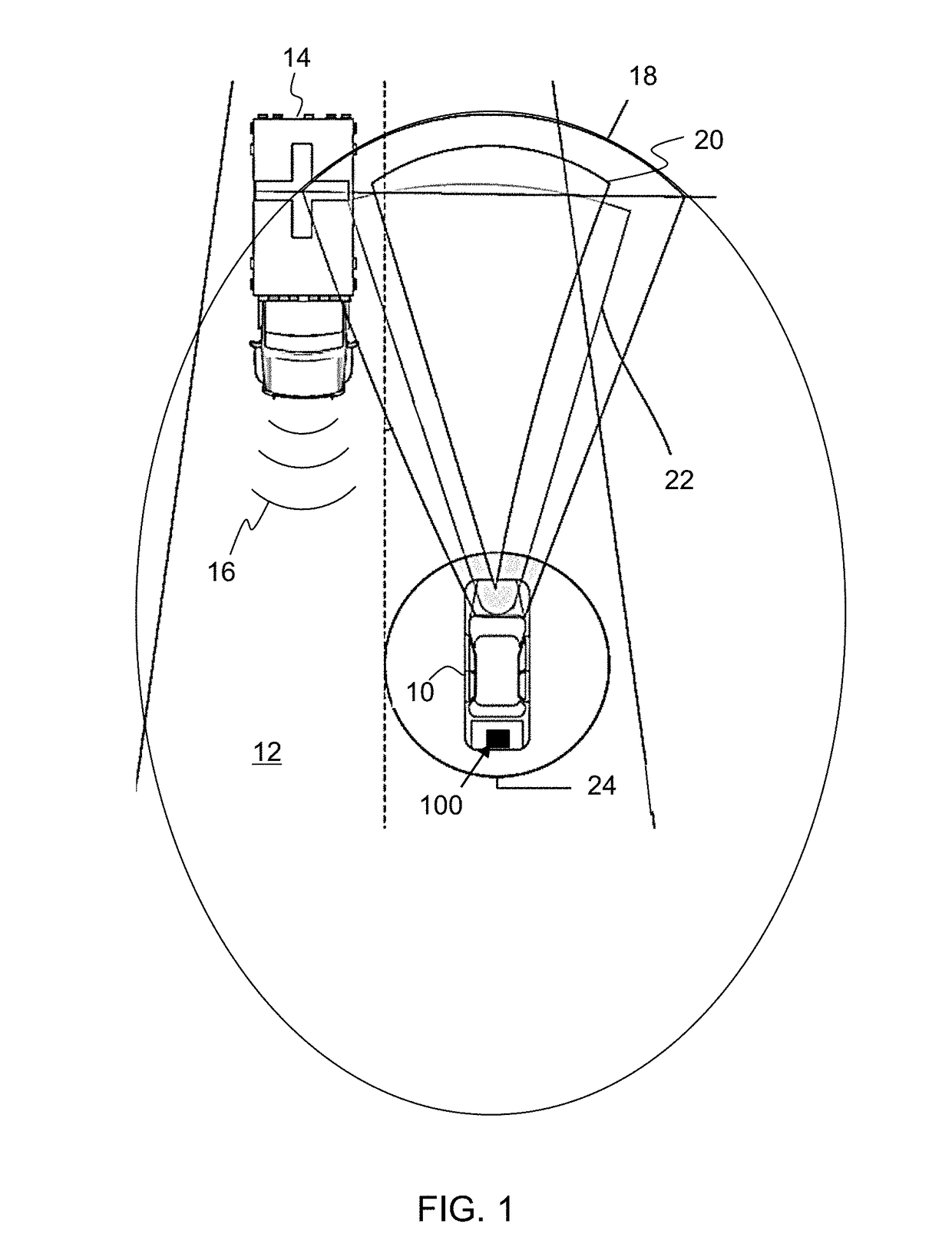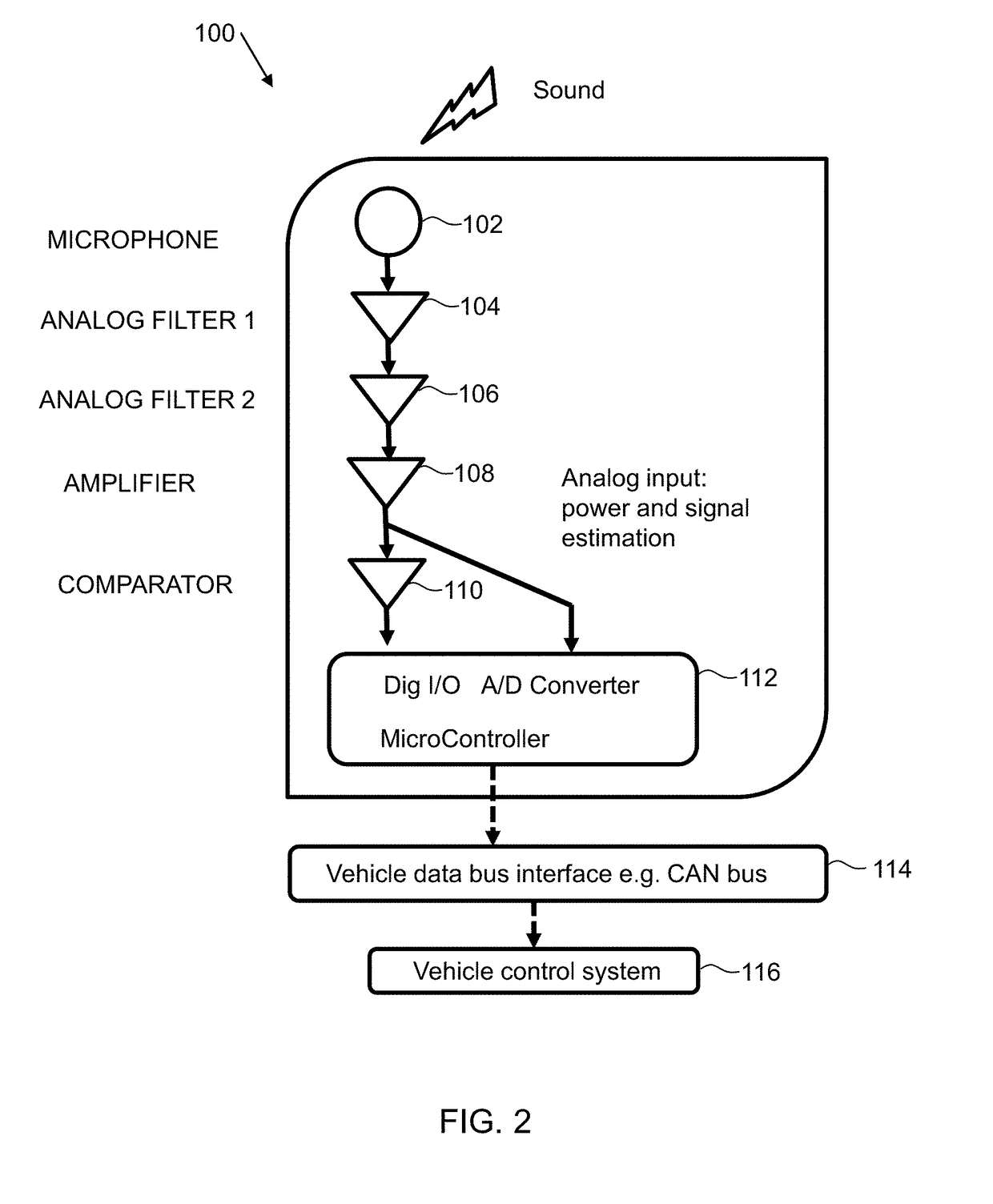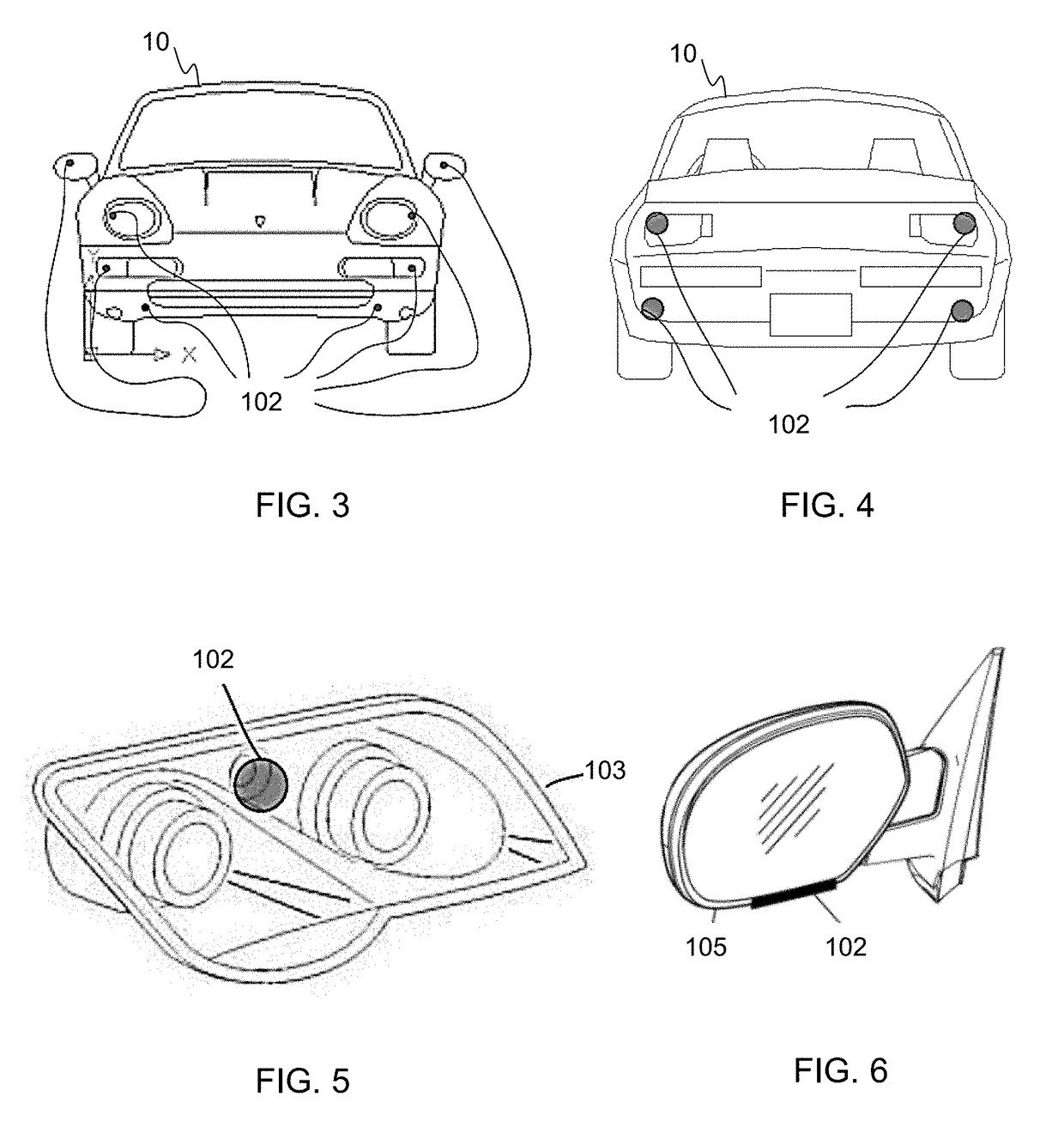Audio processing for vehicle sensory systems
a sensory system and audio processing technology, applied in the field of audio processing for vehicle sensory systems, can solve the problems of inconvenient processing of audio signals, and inability to detect ultrasound waves, etc., and achieve the effect of detecting ultrasound waves, and reducing the number of processing steps
- Summary
- Abstract
- Description
- Claims
- Application Information
AI Technical Summary
Benefits of technology
Problems solved by technology
Method used
Image
Examples
Embodiment Construction
Definitions
[0021]Any term or expression not expressly defined herein shall have its commonly accepted definition understood by a person skilled in the art. As used herein, the following terms have the following meanings.
[0022]“Audio sensor” refers to a device that detects and converts a sound wave into an electrical signal. In an embodiment, an audio sensor may be a microphone comprising a transducer.
[0023]“Computer processor” refers to an electronic device that is capable of processing an input electronic signal to produce an output electronic signal. In embodiments, a computer processor may include one or more devices commonly referred to as a programmable logic controller, a printed circuit board, an integrated circuit, a microcontroller, a processor or the like. A “computing device” comprises at least one computer processor, and may also include computer-readable memory which may include instructions which are executable by the processor.
[0024]“Non-transitory computer-readable m...
PUM
 Login to View More
Login to View More Abstract
Description
Claims
Application Information
 Login to View More
Login to View More - R&D
- Intellectual Property
- Life Sciences
- Materials
- Tech Scout
- Unparalleled Data Quality
- Higher Quality Content
- 60% Fewer Hallucinations
Browse by: Latest US Patents, China's latest patents, Technical Efficacy Thesaurus, Application Domain, Technology Topic, Popular Technical Reports.
© 2025 PatSnap. All rights reserved.Legal|Privacy policy|Modern Slavery Act Transparency Statement|Sitemap|About US| Contact US: help@patsnap.com



